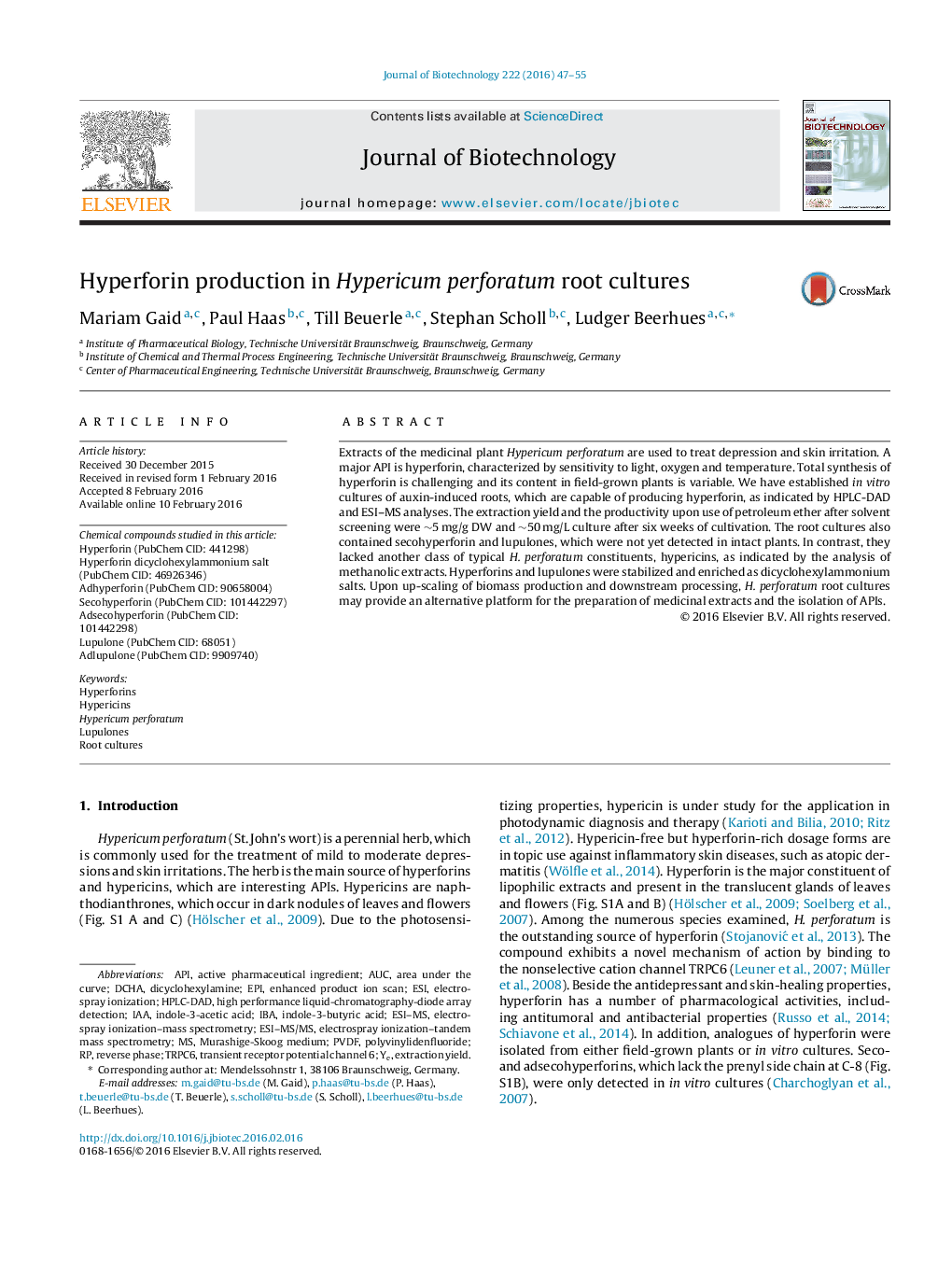| Article ID | Journal | Published Year | Pages | File Type |
|---|---|---|---|---|
| 6490639 | Journal of Biotechnology | 2016 | 9 Pages |
Abstract
Extracts of the medicinal plant Hypericum perforatum are used to treat depression and skin irritation. A major API is hyperforin, characterized by sensitivity to light, oxygen and temperature. Total synthesis of hyperforin is challenging and its content in field-grown plants is variable. We have established in vitro cultures of auxin-induced roots, which are capable of producing hyperforin, as indicated by HPLC-DAD and ESI-MS analyses. The extraction yield and the productivity upon use of petroleum ether after solvent screening were â¼5Â mg/g DW and â¼50Â mg/L culture after six weeks of cultivation. The root cultures also contained secohyperforin and lupulones, which were not yet detected in intact plants. In contrast, they lacked another class of typical H. perforatum constituents, hypericins, as indicated by the analysis of methanolic extracts. Hyperforins and lupulones were stabilized and enriched as dicyclohexylammonium salts. Upon up-scaling of biomass production and downstream processing, H. perforatum root cultures may provide an alternative platform for the preparation of medicinal extracts and the isolation of APIs.
Keywords
EPIMurashige-Skoog mediumDCHAESI–MS/MSLupulonesHyperforinsHypericum perforatumTRPC6IBAHypericinsAPIPVDFIAAHPLC-DADESIAUCESI–MSindole-3-butyric acidindole-3-acetic acidenhanced product ion scanDicyclohexylamineelectrospray ionization–mass spectrometryExtraction yieldRoot culturesReverse phasearea under the curveActive Pharmaceutical Ingredientelectrospray ionization
Related Topics
Physical Sciences and Engineering
Chemical Engineering
Bioengineering
Authors
Mariam Gaid, Paul Haas, Till Beuerle, Stephan Scholl, Ludger Beerhues,
